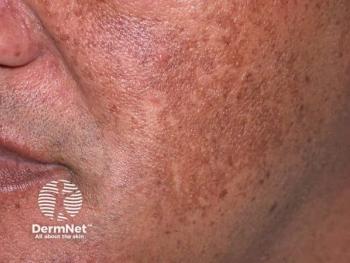
Pearls for Treating Dermatologic Conditions in Skin of Color
Treating dermatologic conditions in skin of color requires cultural awareness and sensitivity, in addition to being aware of how presentation may differ.
Dermatologic conditions appear differently for patients with skin of color than it will on the White patients, who are commonly used as the illustrative examples for a variety of skin concerns. At her session at the virtual 2021 American Academy of Pediatrics National Conference & Exhibition, Candrice R. Heath, MD, FAAP, assistant professor of dermatology at the Lewis Katz School of Medicine in Philadelphia, Pennsylvania, shared clinical pearls for caring for skin of color.
She opened the session with a case of a 14-year-old patient who came in because of dark spots on the face that been worsening over the course of 3 years. A diagnosis of acne and postinflammatory hyperpigmentation was given and a treatment plan was created to address both concerns, with an emphasis on the acne. Heath noted that the clinician may be happy with the treatment plan, but the patient was likely out in the parking lot feeling like the appointment was a waste of time when all he or she wanted was something to treat the dark spots. When faced with hyperpigmentation, clinicians should acknowledge that they see the issue and explain how the treatment plan will be addressing it, such as the retinoid in this case. For patients that are prescribed a retinoid, clinicians should encourage the use of moisturize and emphasize that only a pea-sized amount of it should be used. Due to the irritation that retinoids can cause, it’s highly likely that there will not be 100% adherence. However, physicians should discuss with patients and caregivers that daily inquiries of “did you use your retinoid medication today?” can ensure that application occurs at a rate that shows benefits.
Atopic dermatitis and forms of eczema are conditions that may appear differently on skin of color and certain forms may be more common as well. Erythema may not be perceptible. Heath said that a “close your eyes and use touch” approach can help determine the site of flares, particularly with follicular eczema, which feels like goosebumps and occurs more frequently in Black children than others. Eczema herpeticum is another form that is often found in young children aged 3 to 4 years and is more common in non-White children, particularly children of Asian descent. It is also more common in children from higher-income households. Additionally Black and Hispanic children are more likely to have persistent atopic dermatitis as well as disease that is resistant to treatment. Because of this treatment resistance, it’s important to use a broad approach to treatment from soak and smear to phototherapy to systemic medications like dupilumab.
Heath reminded that tinea capitis can present in a variety of ways including diffuse scale, annular plaque, black dot, and inflammatory. When determining whether to wait until the culture comes back, she recalled a study that showed how certain signs of the condition including alopecia, scaling, and occipital lymphadenopathy can be fairly certain indicators of the condition. When using griseofulvin microsize (125 mg/5 ml), she recommended treating at 20-25 mg/kg/day for 12 weeks. With terbinafine (250 mg tablet), it’s a quarter of a tablet per day for children who weigh 10 to 20 kg; half a tablet per day for children weighing 20 to 40 kg; and the whole tablet per day for children who weigh more than 40 kg.
When performing a scalp exam, clinicians should use cultural humility and sensitivity. Keep in mind the “wash day” ritual that many Black children with tightly coiled hair undergo, which is time intensive and involves the removal of the previous style, washing the hair twice, conditioner, detangling with a large wide tooth comb while the conditioner is on the hair, rinsing, a more intensive detangling, and then the final styling. When prescribing a topical for the scalp, it’s important to discuss where it would fit in with this process. Heath closed her session by emphasizing that tightly coiled hair is a big deal because it’s an intersection of culture and the relationship between the child and the hairstylist.
This article was originally posted by our sister publication
Reference
1. Heath C. Dermatologic disorders in pediatric patients with skin of color. American Academy of Pediatrics 2021 National Conference & Exhibition; virtual. Accessed October 9, 2021.
Newsletter
Like what you’re reading? Subscribe to Dermatology Times for weekly updates on therapies, innovations, and real-world practice tips.
















